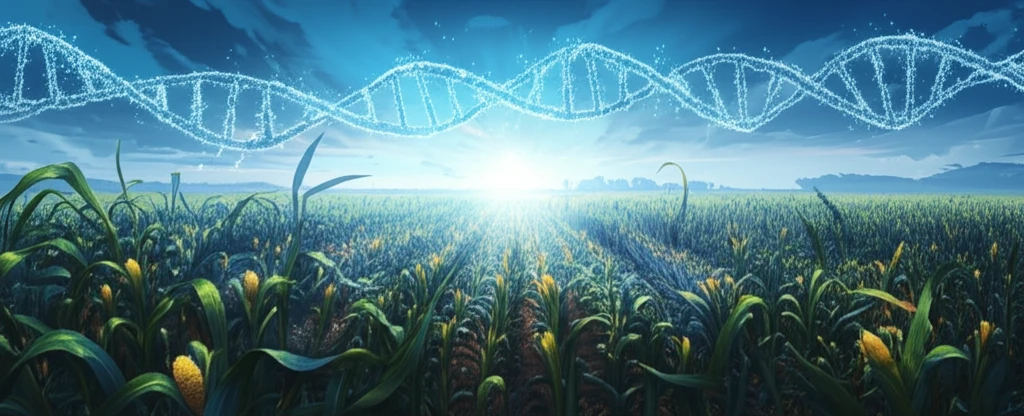
Decoding the Maize Methylome: How Understanding Plant Epigenetics Could Revolutionize Agriculture
"Unlocking the secrets of DNA methylation in maize could lead to hardier crops and better yields."
Imagine a world where crops are more resilient, yields are higher, and farming is more sustainable. This isn't just a pipe dream; it's a potential reality being unlocked through the study of plant epigenetics, specifically the maize methylome. DNA methylation, a process that modifies DNA without changing its sequence, is a key player in this field, influencing how genes are expressed and inherited.
DNA methylation is a crucial part of how plants, including maize (commonly known as corn), adapt and respond to their environment. Think of it as a series of switches that can turn genes on or off, impacting everything from growth and development to stress response. This process allows plants to pass down traits not directly encoded in their DNA, offering a powerful mechanism for adaptation across generations.
For years, scientists have been unraveling the complexities of DNA methylation, especially in model organisms like Arabidopsis. Now, with the rise of advanced technologies, researchers are taking a closer look at the maize methylome, which holds immense promise for improving crop production and ensuring food security.
The Power of the Maize Methylome

The maize methylome offers a treasure trove of information that could revolutionize agriculture. By understanding how DNA methylation patterns influence traits in maize, scientists and breeders can develop crops better suited to withstand environmental stresses such as drought, pests, and disease. This is particularly important in a world facing climate change and increasing demands on food production.
- Gene Silencing: DNA methylation often acts as a silencer, turning off genes that are not needed at a particular time or under certain conditions.
- Epigenetic Inheritance: These methylation patterns can be passed down through cell divisions, allowing for the inheritance of traits beyond the DNA sequence itself.
- Variation and Adaptation: Natural variations in methylation patterns contribute to the diversity among maize varieties, providing a source of variation for crop improvement.
Looking Ahead: The Future of Maize Research
The study of the maize methylome is still in its early stages, but the potential benefits for agriculture and food security are immense. By continuing to unravel the complexities of DNA methylation and its role in gene regulation, we can unlock new strategies for breeding hardier, more productive crops. This exciting field of research promises to transform the way we approach agriculture and ensure a sustainable food supply for future generations.
